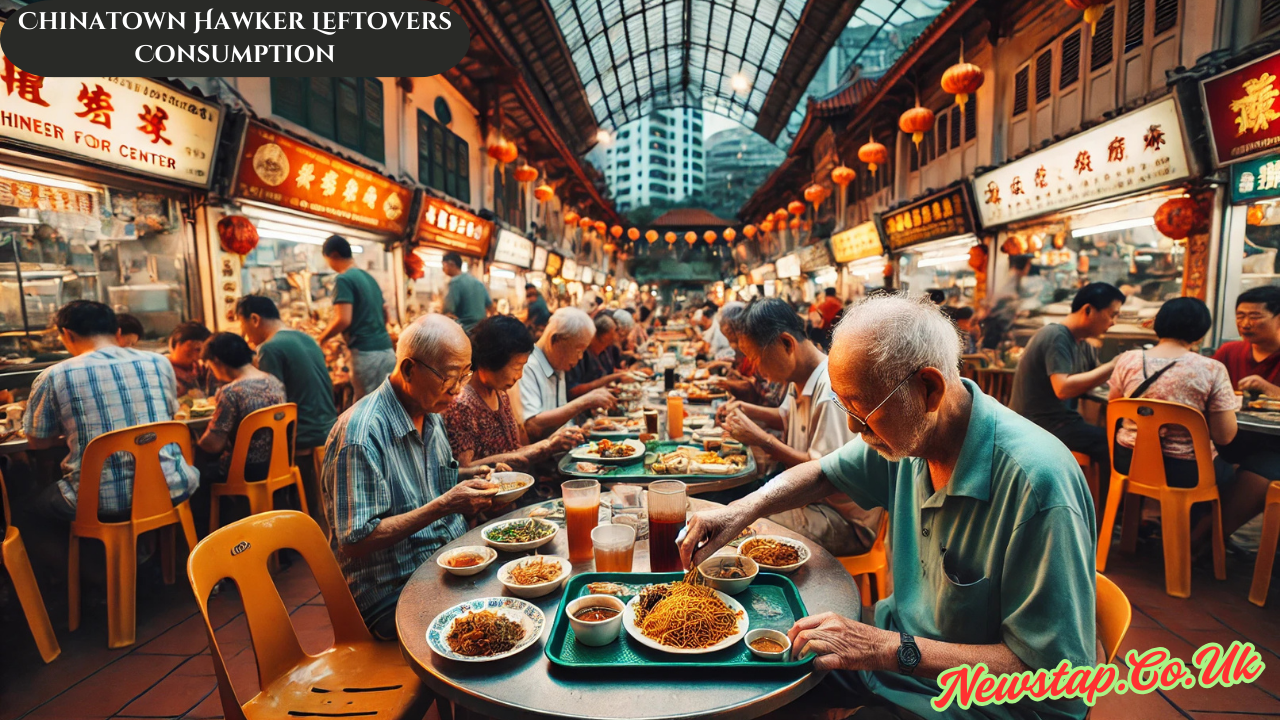Introduction
Chinatown hawker leftovers consumption is an intriguing subject that intertwines cultural traditions, sustainability efforts, economic concerns, and community interactions. The hawker centers in Chinatown are famous for their affordable and diverse food options, catering to both locals and tourists. However, a lesser-discussed phenomenon within these vibrant food hubs is the consumption of leftover food. Whether driven by frugality, environmental consciousness, or necessity, this practice raises essential questions about food waste, hygiene, and social responsibility.
Cultural Perspective on Chinatown Hawker Leftovers Consumption
Food waste is often frowned upon in many Asian cultures, particularly within communities that have experienced hardships in the past. Elders who grew up in times of food scarcity view leftover consumption as a way to respect food and avoid unnecessary waste. In Chinatown’s hawker centers, it is not uncommon to see elderly individuals or even younger people taking leftovers from tables or requesting unfinished meals from other diners. This practice is rooted in traditional values where food is considered a blessing and wasting it is viewed as irresponsible.
Moreover, the communal nature of dining in Chinatown hawker centers also contributes to this behavior. In these bustling spaces, people from different backgrounds come together to enjoy affordable meals, and sharing food has always been a part of the culture. Many elderly individuals and frugal diners justify consuming leftovers as a practical way to save money while still enjoying delicious food.
The Environmental Impact of Consuming Hawker Leftovers
From an environmental standpoint, Chinatown hawker leftovers consumption contributes to reducing food waste, which is a significant global issue. Every year, millions of tons of food are wasted, leading to excessive carbon emissions, deforestation, and unnecessary depletion of resources used in food production. In Singapore alone, food waste has been increasing, making sustainable dining practices more important than ever.
By consuming leftovers, some individuals are actively participating in waste reduction, albeit informally. This grassroots effort aligns with global sustainability goals that encourage minimizing food waste, repurposing excess food, and supporting environmentally responsible consumption. While some might view the practice as unsanitary, those who engage in it see it as a way to make a meaningful impact on food conservation efforts.
Health and Safety Concerns Related to Chinatown Hawker Leftovers Consumption
While the idea of reducing food waste through leftover consumption sounds practical, it raises valid concerns about food safety and hygiene. Chinatown hawker centers, like other food courts, are high-traffic areas where food is left exposed to the environment. Unfinished food left on tables for extended periods is vulnerable to contamination from bacteria, airborne pollutants, and even pests.
Foodborne illnesses caused by bacteria such as Salmonella, Listeria, and E. coli pose serious health risks. People consuming leftovers from unknown sources may unknowingly ingest contaminated food, leading to gastrointestinal illnesses or food poisoning. Experts often advise against eating food that has been left out for more than two hours, especially in warm and humid climates where bacteria multiply rapidly.
To address these concerns, Chinatown hawker centers have implemented food safety regulations to ensure that fresh meals are prepared under hygienic conditions. However, these regulations do not extend to leftover food consumption. Thus, individuals who engage in this practice should be aware of the potential risks and take precautions, such as ensuring the food has not been left exposed for too long and avoiding items that spoil quickly.
Economic Factors Influencing Leftover Consumption in Chinatown
For some people, Chinatown hawker leftovers consumption is a matter of economic necessity. With the rising cost of living, inflation, and financial hardships, individuals who struggle to afford daily meals may resort to consuming leftovers as a way to stretch their budget. The elderly, low-income individuals, and even some freegan practitioners view this practice as a survival strategy.
In some cases, food insecurity drives people to look for alternative means of sustenance. Some organizations and community-driven initiatives work to provide free meals to the needy, but for those who may not have access to these resources, leftover consumption serves as an informal solution. While it may not be a sustainable long-term strategy, it highlights the economic disparities present even in developed cities where food abundance exists alongside hunger.
Social Perceptions and Community Reactions
The practice of Chinatown hawker leftovers consumption often sparks mixed reactions from the community. Some diners are indifferent, while others find it unsanitary or uncomfortable to witness. The general public’s perception is shaped by cultural beliefs, hygiene concerns, and personal values. While some view it as a responsible way to prevent waste, others consider it an act of desperation or an undesirable habit.
Additionally, there are concerns about dignity and respect for those who resort to leftover consumption. Some individuals feel that it highlights economic inequalities and the struggles of marginalized groups, drawing attention to the need for better social support systems. On the other hand, supporters argue that reducing food waste is a collective responsibility, and judgment should not be placed on those who choose to engage in this practice.
Community and Government Initiatives to Address Food Waste
To tackle the issue of food waste and support those in need, several initiatives have been introduced in Chinatown and other parts of Singapore. Food redistribution programs aim to collect surplus food from hawker centers and distribute it to underprivileged individuals in a safe and hygienic manner. Some community-driven projects also educate the public on mindful consumption, encouraging people to order only what they can finish.
There have also been efforts to implement donation programs where unsold food from hawker stalls is repackaged and given to low-income families. These structured solutions provide a more sustainable and safer alternative to leftover consumption while still addressing food waste concerns.
The Ethical Debate: Responsibility vs. Necessity
The ethical aspect of Chinatown hawker leftovers consumption lies in the balance between individual responsibility and necessity. While it is commendable that some individuals take measures to prevent food waste, it is also essential to consider public health and dignity. Rather than relying on leftover consumption, a more effective solution would be for communities and governments to establish better food redistribution networks and waste reduction programs.
Public awareness campaigns can also help educate diners on portion control, encouraging them to order only what they can finish. If fewer leftovers are generated, the need for informal consumption methods may decrease. Additionally, hawker centers can play a role by offering smaller portion sizes or takeaway options to ensure food is not wasted unnecessarily.
Conclusion
Chinatown hawker leftovers consumption is a multi-faceted issue that involves cultural values, environmental sustainability, economic factors, and public health concerns. While the practice has its merits in reducing food waste and helping those in need, it also presents significant hygiene risks and raises ethical questions.
Moving forward, a more structured approach to food redistribution and waste management can help balance the need to reduce food wastage while ensuring public health and dignity. By fostering awareness, implementing better policies, and encouraging responsible consumption habits, Chinatown’s hawker culture can continue to thrive without compromising food safety or social values.
Also Read: Rich Dense Cake NYT: A Delicious Exploration of the Ultimate Indulgence



